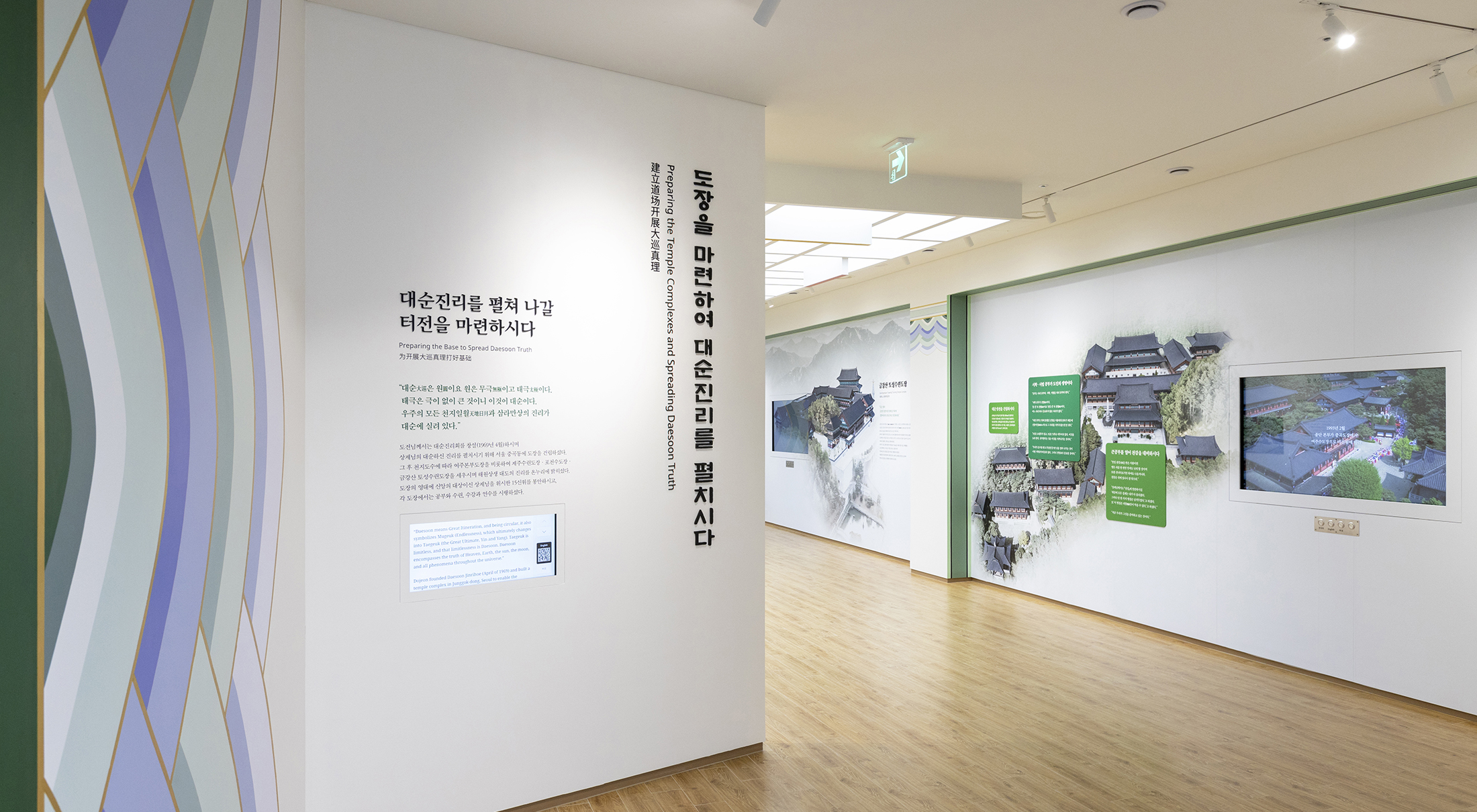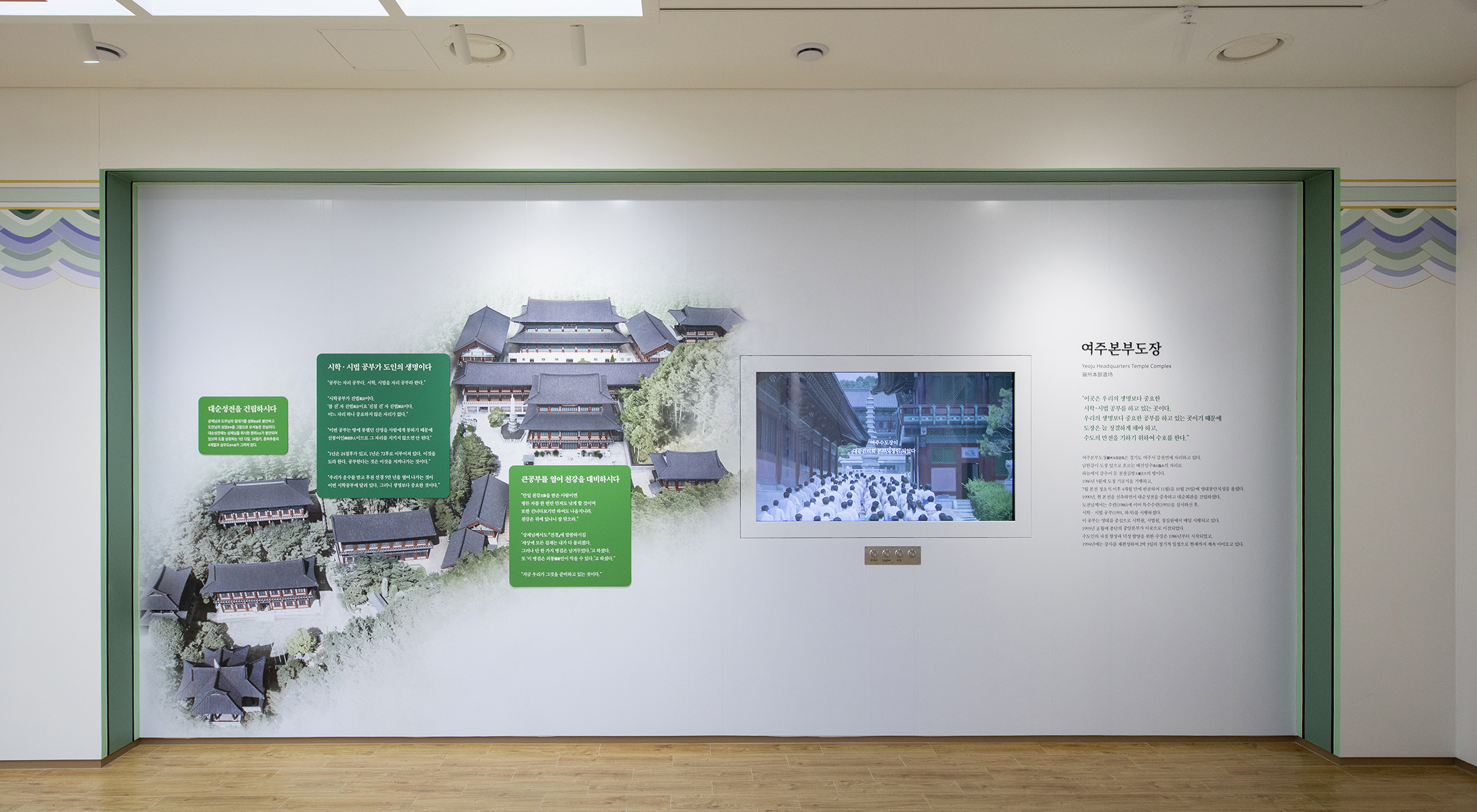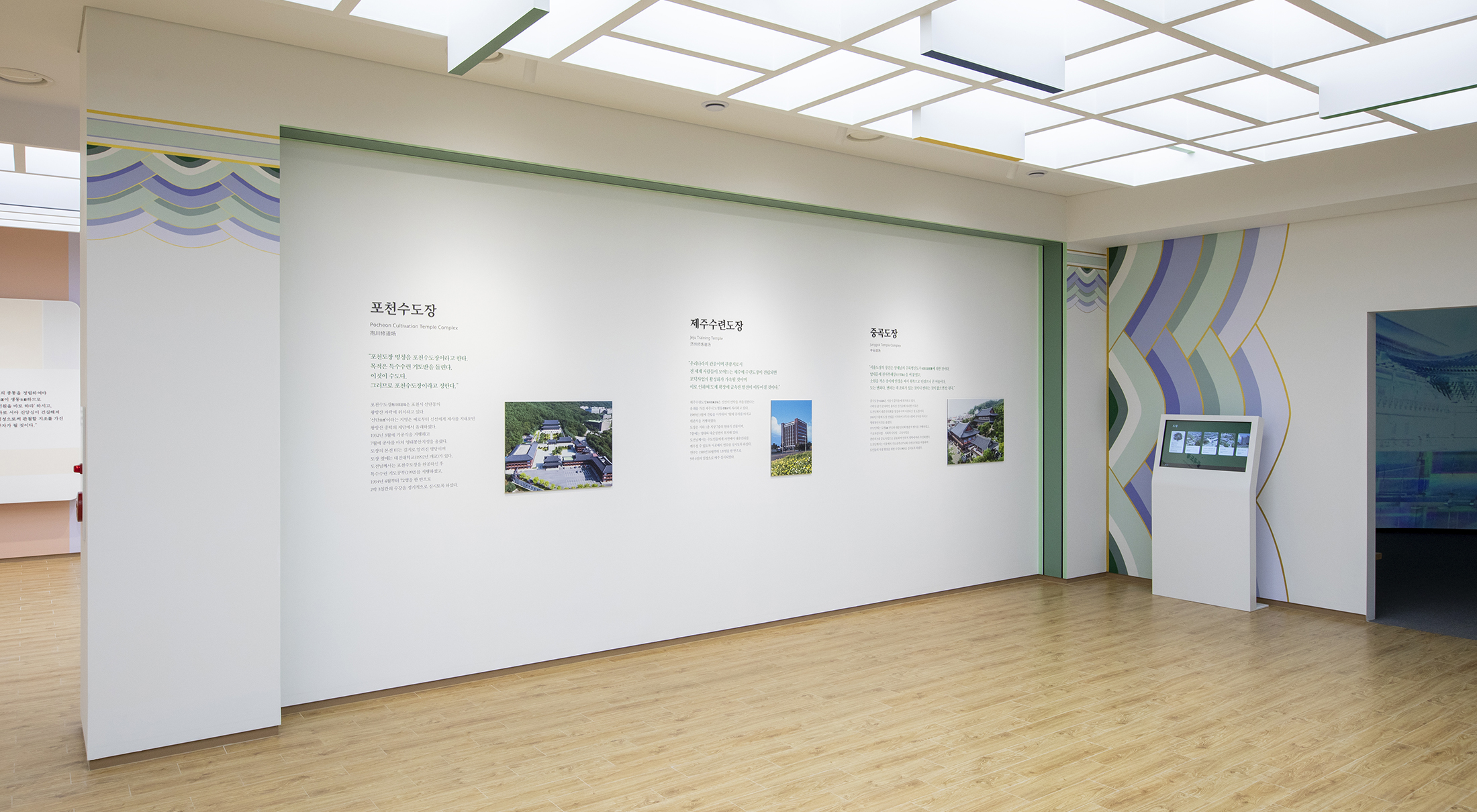Spreading Sangje’s Virtue
All over the World
- Preparing the Base to Spread Daesoon Truth
“Daesoon, the Great Itineration, is a circle,
and a circle is both Mugeuk (Limitless: pre-differentiated yin and yang)
and Taegeuk (Ultimate: post-differentiated yin and yang).
In its boundless greatness, Taegeuk transcends polarity.
It is none other than Daesoon.
The truth of all myriad forms throughout the universe
including Heaven, Earth, the Sun, and the Moon
is encompassed within Daesoon.”
Dojeon founded Daesoon Jinrihoe in April of 1969 and constructed a temple complex
in Junggok Town, Seoul to facilitate the unfolding of the Truth of Sangje’s Great Itineration.
Subsequently, he established the Yeoju Headquarters Temple Complex, Jeju Training Temple,
Pocheon Cultivation Temple Complex, and Geumgangsan Toseong Training Temple Complex
according to the Degree Numbers (Dosu) of Heaven and Earth
to reveal the Truth of the Great Dao of the Resolution of Grievances for Mutual Beneficence to the whole world.
He enshrined the 15 Categories of Divine Beings including our object of faith,
Sangje at Yeongdae Shrine (the Shrine of Gods) in each temple complex.
Dojeon implemented various practices and educational activities at each temple complex,
including Gongbu (Communal Holy Works), Suryeon (Recitation Training),
Sugang (lecture-style educational courses), and Yeonsu (educational courses with field trips).
- The Temple Complexes
“Our temple complexes house Yeongdae Shrine.
As such, they serve as earthly equivalents to the Jade Capital,
complete with Sacred Halls embodying the Perfected State of Unification with the Dao.”
Temple complexes are sacred places devoted to the worship of Sangje
and the Great Divine Beings of Heaven and Earth.
The 15 Categories of Divine Beings, prominently enshrined with Sangje,
represent the law of the Dao that was revealed and established by the Lord of the Dao,
who fully awakened to Sangje’s Reordering Works.
At each temple complex, Yeongdae Shrine (the Shrine of Gods)
houses the enshrinement of the 15 Categories of Divine Beings.
Dojeon emphasized that the system of our religious order exists
to uphold and protect the methods of the Dao,
and the fulfillment of Dao cultivation can only be attained
by faithfully observing these methods and the system of our order.
Temple complexes are replete with divine beings;
thus demanding that one’s mind and body be kept pure and upright at all times.
The History of the Temple Complexes
Groundbreaking Ceremony for Junggok Temple Complex
May 20, 1969 (4/5 lunar)
Holding of the Enshrinement Offering Ceremony of Yeongdae Shrine (the Shrine of Gods)
at Yeoju Cultivation Temple Complex
November 26, 1986 (10/25 lunar)
Holding of the Enshrinement Offering Ceremony of Yeongdae Shrine at Jeju Training Temple
July 26, 1989 (6/24 lunar)
Holding of the Enshrinement Offering Ceremony of Yeongdae Shrine at Pocheon Cultivation Temple Complex
July 23, 1992 (6/24 lunar)
The Designation of Headquarters was Moved from Junggok Temple Complex
and Given to Yeoju Cultivation Temple Complex (Thereafter, ‘Yeoju Headquarters Temple Complex’)
February, 1993 (the 1st lunar month)
Holding of the Enshrinement Offering Ceremony of Yeongdae Shrine
at Geumgangsan Toseong Training Temple Complex
February 1, 1996 (12/13/1995 lunar)
Yeongdae Shrine (the Shrine of Gods)
“The place where Sangje is worshipped is called ‘Yeongdae Shrine’ or the ‘Shrine of Gods.’”
“Yeongdae Shrine is the holiest place where Sangje
and the Great Divine Beings of Heaven and Earth are enshrined.
Therefore, we must equip ourselves with sincerity, respectfulness, faithfulness,
and all forms of propriety.”
“When we say ‘There is but one Yeongdae Shrine,’ it does not refer to a physical location.
Yeongdae Shrine is the singular place where the Supreme God is truly worshipped.
There is only one such place, and it belongs exclusively to us.”
- Yeoju Headquarters Temple Complex
“This is where the Holy Works of Shihak and Shibeop,
both more important than our lives, are conducted.
Therefore, the temple complex must always be kept clean and guarded
to ensure the completeness of Dao cultivation.”
Yeoju Headquarters Temple Complex is located in Gangcheon Township, Yeoju City, Gyeonggi Province.
The temple complex was constructed on a propitious plot of land
which was previously hidden away by Heaven for its present purpose.
Positioned with the Namhan River in front,
this site also satisfies a vital Feng-Shui principle known as Baesanimsu,
which involves having a mountain at the back and water in the front.
The groundbreaking ceremony for the temple complex took place in May 1986,
followed by the cornerstone laying ceremony of the main sanctuary building in July.
Four months later, In November (10/25 lunar),
the enshrinement offering ceremony for Yeongdae Shrine (the Shrine of Gods) was held.
In 1990, the current main sanctuary building was newly built, and
Daesoon-seongjeon (the Hall of Sacred Paintings) was expanded.
Additionally, Daesoon Assembly Building was constructed.
Suryeon (recitation training) was introduced by Dojeon in 1986, followed by Specialized Suryeon in 1991.
After the implementation of these training programs,
the Holy Works of Shihak (commenced on the summer solstice of 1991) and Shibeop were also implemented.
These Holy Works are conducted every day, all day long, taking place at Shihakwon (the Building for Shihak),
Shibeopwon (the Building for Shibeop), and Jeongshimwon (the Building for Forming an Upright Mind)
with Yeongdae Shrine at the center.
In the 1st lunar month of 1993, the central headquarters of Daesoon Jinrihoe was relocated to this site.
Sugang, a lecture-style educational course that enhances the capabilities and virtues of Dao practitioners,
was initiated in 1986, and in 1994, the instructors of this program were reorganized.
This course continues to be regularly conducted as 3-day and 2-night sessions up to the present day. -
The Holy Works of Shihak and Shibeop are the Lives of Dao Cohorts
“The communal Holy Works carried out by devotees involve taking on positions
and fulfilling tasks. Shihak and Shibeop are two types of communal Holy Works.”
“The Holy Work of Shihak is ‘jinbeop,’ which means ‘true dharma.’
However, there is a homophone, ‘jinbeop,’ which means ‘holding battle positions.’
Therefore, no position or task should be considered unimportant.”
“In the current era, divine beings who previously resided in the earth
now reside within our human bodies.
As a result, participants in Holy Work must maintain
their individual positions during the Holy Works.”
“The year is divided into 24 major seasonal divisions and 72 minor seasonal divisions,
which are collectively referred to as the Dao.
The practice of Holy Works involves preserving these divisions.”
“It is up to the Holy Work of Shihak to secure our glorious destiny
and usher in the 50,000-year reign of the Earthly Paradise of the Later World.
Therefore, it holds greater importance than life itself.”
Great Holy Works Performed to Prepare for the Descent of Heavenly Energy
“A person who receives divine energy descending from Heaven
will possess the ability to heal the sick with a single touch or even a glance.
As the Descent of Heavenly Energy shall appear later, cultivate yourself diligently.”
“In The Canonical Scripture, Sangje also stated,
‘I have defeated all other disasters in this nation except catastrophic disease.’
He further emphasized that the prevention of this catastrophic disease
can only be achieved through the practice of Presiding over Cures (Ui-tong).”
“Now, we are preparing that technique.”
Creating Daesoon-seongjeon
Daesoon-seongjeon is an exhibition room where life records of Sangje and Doju are enshrined through sacred paintings.
It also showcases the sacred achievements of Dojeon.
Within the hall, Sangje, Doju, and Shakyamuni are revered in the Principal Holy Position (Wonwi).
Additionally, the site features the Ox Seeking Pictures and indoor paintings that symbolize the Dao
through depictions of the 12 months, the 24 seasonal divisions, and the 4 seasons of winter, spring, summer, and fall.
- Geumgangsan Toseong Training Temple Complex
“In the future, the Dao will reside within the 12,000 peaks of Mount Geumgang,
giving rise to 12,000 Dao-empowered sages who will illuminate the world.”
Geumgangsan Toseong Training Temple Complex is located
in Toseong Township, Goseong County, Gangwon Province.
Behind this site lies Shinseon Peak (1,204m), the first of the 12,000 peaks of Geumgang Mountain.
The site gives the impression of embracing the vast East Sea that lies before it.
The groundbreaking ceremony for this site was held in January 1995,
and the construction was completed in February of the following year.
Subsequently, the enshrinement offering ceremony for Yeongdae Shrine (the Shrine of Gods) took place.
In the temple, surrounding the main sanctuary building,
there are 13 other structures including Myeongshim-dang (Clear Mind Hall) and Jonggak (the Bell Pavilion).
Furthermore, a rest center was established at this site in June 1996.
In November 1997, an enshrinement ceremony was held
to commemorate the installation of an 18m high icon of Maitreya next to Yeongdae Shrine.
Dojeon designated this location as a training temple complex,
enabling the implementation of Yeonsu, an educational program that includes field trips.
Yeonsu began concurrently with the enshrinement offering ceremony of Yeongdae Shrine
and has been ongoing ever since.
The program follows a 6-day, 5-night curriculum
and can accommodate a total of 120 students on a weekly basis. -
Yeonsu at Geumgangsan Toseong Training Temple Complex
“Yeonsu (educational courses with field trips) provides training,
which is why this place is referred to as a training temple complex.”
“If you attend Yeonsu, you can experience a unique spiritual energy
and undergo significant mental transformations.
The primary goal of Yeonsu is to foster unity...
Lectures are conducted in the morning, followed by afternoon field trips.”
“During Yeonsu, you can experience significantly greater purification
and enhancement of spiritual energy compared to ordinary sightseeing...
Building a temple complex here facilitates the easy attainment of spiritual energy and power...
The climate and weather favorably align with the timing of Yeonsu.”
Geumgangsan Toseong Training Temple Complex commenced offering
the 6-day, 5-night program of Yeonsu
on January 31, 1996 (the 12th day of the 12th lunar month of 1995)
and had conducted 1,000 classes as of February 20, 2015. The program is still ongoing.
- Junggok Temple Complex
“The creation of the Seoul Temple Complex was carried out
in accordance with Sangje’s Degree Number
of the ‘Parallel Advance Both by Sea and by Land.’
Sangje ordered a disciple to write ‘A Son of Heaven Floating upon the Sea’
on a piece of paper and post it on Namdaemun Gate.
Meanwhile, He had another disciple wrap a pair of glasses
in the same paper with wishes written on it and threw it to the north,
signifying the direction of Seoul.
The Dao undergoes a transformation.
Although there is a change in the Dao itself, harmony is found within it.
Therefore, change becomes necessary.”
Junggok Temple Complex is situated in Junggok Town, Seoul,
at the foot of Yongma Mountain
which is located near the end of Surak Mountain.
It was the first temple complex established by Dojeon
when he founded Daesoon Jinrihoe.
The construction of the temple complex began in May 1969
and was completed in June 1971.
Following its completion, an enshrinement offering ceremony was held
for the installation of Yeongdae Shrine.
In 1972, the Dao Constitution was promulgated,
and a ceremony was held to install Daesoon Jinrihoe’s name plaque.
Shortly after, charity aid, social welfare, and education were declared
as Daesoon Jinrihoe’s Three Major Works.
These initiatives were implemented annually
according to the organization’s annual planning.
Dojeon implemented Sugang (lecture-style educational courses, 1980)
at this temple to enhance the spiritual capacity of Dao cohorts.
Additionally, he introduced Gido-gongbu (the Holy Works of Prayer, 1974)
and Suryeon (recitation training, 1978) at the temple complex.
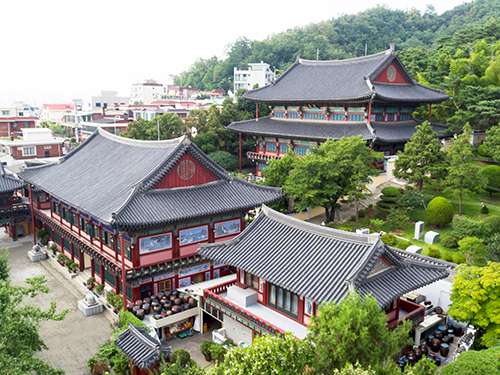
Jeju Training Temple
“When a training temple is built on Jeju Island,
which serves as a gateway to our country
and attracts people from all over the world as a tourist destination,
our propagation will be actively accelerated.
Accordingly, the expansion of the Dao’s influence will progress dramatically.”
Jeju Training Temple is situated in Nohyeong Town,
which is known for an ancient legend about immortals
weighing good and evil with a scale.
Construction of the temple began in March 1989,
and an opening ceremony was held in July to mark its completion.
The temple complex is a modern building
consisting of 7 stories above ground and one story below ground.
On the 7th floor, you can find Yeongdae Shrine (the Shrine of Gods)
and Daesoon-seongjeon (the Hall of Sacred Paintings).
To facilitate the realization of Daesoon Truth,
Dojeon assigned Dao cohorts to conduct
Yeonsu (educational courses with field trips) in nature.
Starting in October 1989, Jeju Training Temple commenced weekly Yeonsu courses,
accommodating classes of 120 students for a duration of six days and five nights.
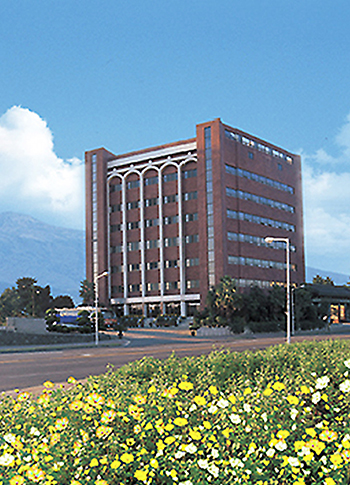
Pocheon Cultivation Temple Complex
“The name of the temple complex in Pocheon is ‘Pocheon Cultivation Temple Complex.’
Its primary purpose is to run classes in Specialized Suryeon (recitation training) and Prayer,
which are essential practices of Dao cultivation.
Therefore, this temple complex is named ‘Pocheon Cultivation Temple Complex.’”
Pocheon Cultivation Temple Complex is situated
at the foot of Wangbang Mountain in Seondan Town, Pocheon.
The name ‘Seondan (altar for the divine beings)’ is derived
from the altar on the hillside of Mount Wangbang,
which had long been used as a sacred site
for conducting offering ceremonies to divine beings.
A groundbreaking ceremony for the temple complex was held in March 1992,
and upon its completion,
an enshrinement offering ceremony for Yeongdae Shrine (the Shrine of Gods)
took place in July of the same year.
The main sanctuary building of this temple complex site is situated
on an auspicious site known as a Myeongdang (luminous court),
and Daejin University, which was opened in 1992, is located right
next to the temple complex.
After completing Pocheon Cultivation Temple Complex,
Dojeon initiated the Holy Works of Specialized Training and Prayer in 1992.
In April 1994, he commenced regular Sugang (lecture-style educational courses)
with classes consisting of 72 students who attend lectures
over a period of three days and two nights.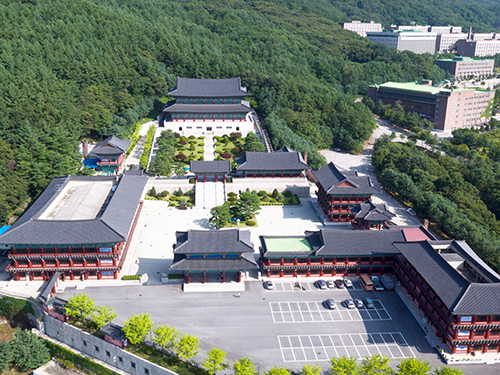
Spreading Sangje’s Virtue
All over the World

1Dojeon’s Descent and Birth

2Being Promoted as a Representative in Taegeukdo
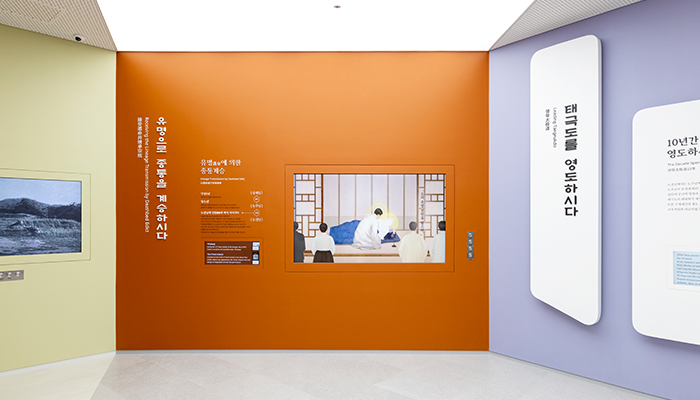
3Receiving the Lineage Transmission by Deathbed Edict

4Leading Taegeukdo
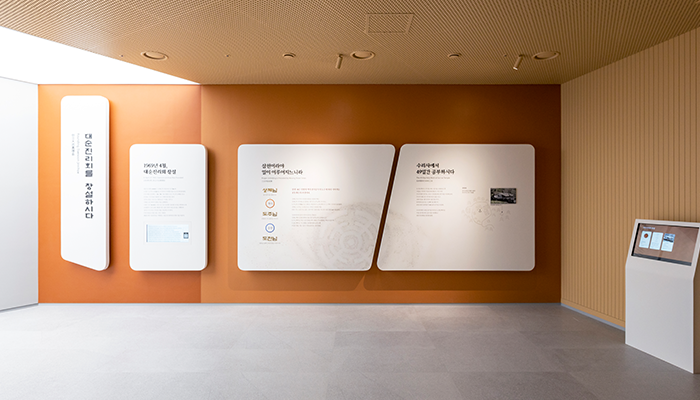
5Founding Daesoon Jinrihoe
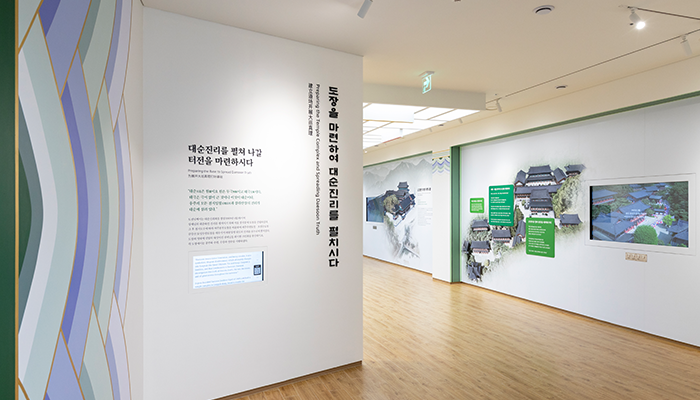
6Preparing the Temple Complexes and Spreading Daesoon Truth

7Illuminating the Path to Unification with the Dao
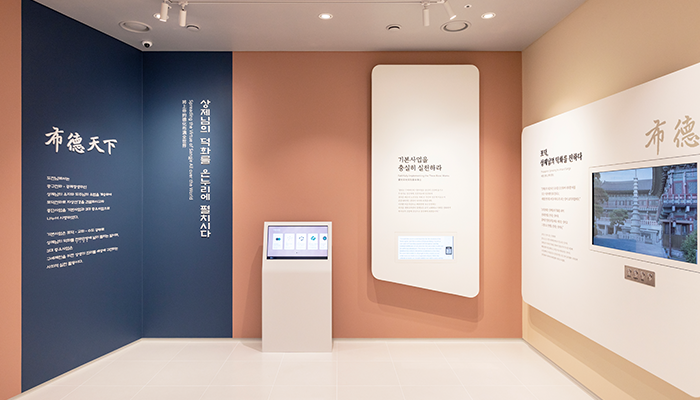
8Spreading the Virtue of Sangje all over the World
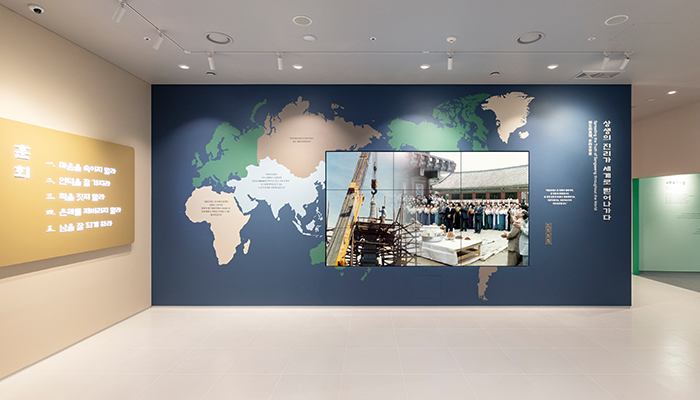
9Spreading the Truth of Sangsaeng throughout the World

